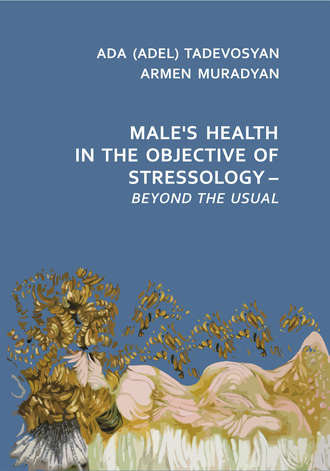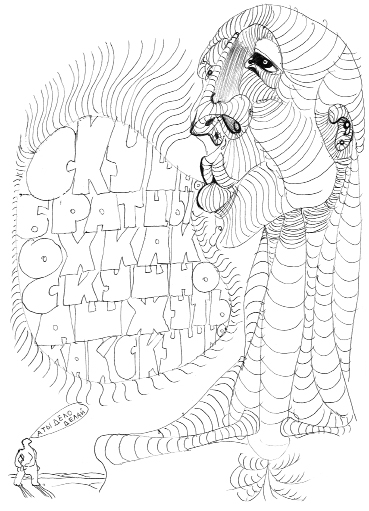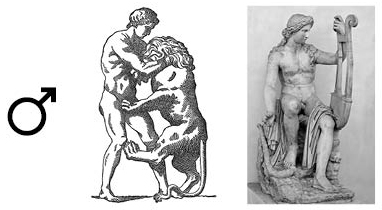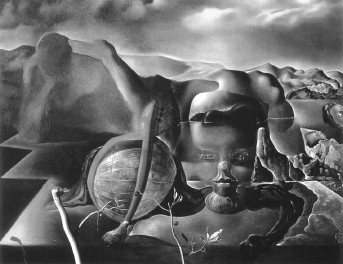
Полная версия
Male’s Health in the Objective of Stressology – Beyond the Usual
A stressor response, having a discrete nature, is manifested by functional disorders. Stressogenesis, due to the frequency of conscious flashback to the experienced trauma, actually becomes non-stop, resulting in increase of the degree of disrupting the homeostasis that in turn can lead to transition of functional disorders into the structural ones. As shown by clinical experience, if “echo-stressors” exist due to the bioelectric mechanism, functional disorders, regardless of the duration of symptoms, practically do not pass into the organic. However, if the “echo-process” involves the endocrine system, and the stimulation of the end organ is done through hormones in the blood system, then the development of organic disorders becomes more probable.
Availability of different varieties of “echo-stressors” explains the commonly known fact that a traumatic event affects man years later, manifesting itself by one of the varieties of a delayed post-stress disorder or behavioral disorders. The appearance of delayed effects is a peculiarity of APES.
The total response is a vector of complex internal processes that manifest themselves as a personal experience of trauma. The complexity of this response requires an integrated approach due to the peculiarities of APES, its multisensory nature, complexity and ability to produce the whole range of health and behavior disorders manifesting itself as one of variants of the stress- phase-oriented model of the mentioned disorders.

“Boring, oh, how boring, it’s horribly boring… And you do it”
Patient’s drawing.
Part Two
PSYCHOLOGY OF MALE PERSONALITY
Quite often the truth is cruel,
If you live in the imaginary world
Ada Tadevosyan
Painting by Joel Rea.
The man and his interaction with the elements –
the main theme of the Australian artist
The first part of the book highlights modern knowledge about a person, key features and components that determine specificity of his/her SBA basis, on which arise, develop, spread and then fade away various momentary, short- and long-term states – vibrations of the ocean of human life along which like waves fly life collisions, dramas, comedies and tragedies changing the quality of life and reducing it. The SBA is a chip inside of which the psychic world (subjective reality) of man is being formed and only by virtue of interaction and interpenetration of these opposites man lives and develops.
There is a great deal of literature, researches relating to the man’s psychic world. There are even more discussions around this subject. The presence of the Internet has opened up easy access to the accumulated knowledge, to comprehend which is not always easy, even to a professional, because of the complexity of the research subject, its versatility, availability of different approaches to the study, different schools and different theoretical concepts. Multiple reiterations, terminological diversity depending on the chosen approach complicate understanding. We are not inclined to retell them, analyze or all the more to prove or disprove anything.
As required, we will refer to a particular source for the sole purpose to bring a reader to treat many issues of interest in a different way, overcoming the persistence of stereotypes. Offering our vision of this or that problem – we follow our authors’ logic. Perhaps we are mistaken. We are always ready to listen to another point of view and change our own, if the evidences are convincing. But we are going our way to the Temple where a person, both a professional and amateur (to both of them “all that is human is not alien”) will find those anchors, life buoys, sweeps, islands using which, taking hold of which will be able to overcome anxieties of the life ocean easier. On our way we gathered pearls of the foregone generations abundantly scattered in the fields of physiology and neurophysiology, psychology and psychoanalysis, logic and philosophy. Summarizing many years’ professional experience of the psychiatrist (“Psyche”) and the urologist (“Eros”) we weaved the found “pearls” of knowledge into a single necklace “Stressology” and through its lens tried to address the current health problems of men in particular, and medicine in general.
PECULIARITIES OF MALE SENSITIVITY
We view the study of the inner mental world of a man as the most reliable way to explore deep mental processes that affect health, life and healthy longevity. Unfortunately, these issues are ignored in medicine. The chosen approach predetermined the direction of the search for the causes of the early mortality of men in comparison with women. The task turned out difficult since it does not have clear boundaries and limits. It is boundless because, if we collect together the spiritual activity of the mature man, after his release from the bondage of phallic libido, it is necessary to give a picture of the whole set of human culture, in fact, world history of mankind with all its curves. The spiritual life of a man fully coincides with the bulk of overcoming life stressors of humanity and the achievements of human culture, scientific and technological progress. At the same time all negative, destructive, devastating ever created by man also come forward as the result of his activity. At all times of history a man lived on the crest of a wave of stressful life ocean, he was the first who took the blows of fate and was looking for the island of hope and stability. But having found them, he returned again and again to the ocean in search for the new and unknown. It is clear why in many languages the word “Male” and “Man” are identical.
In ancient Egypt, the Male-Man was represented by a single hieroglyph.

In English – Man
In French – homme
In Russian – молодой человек
(when applying to a man)
In the Armenian language there is a peculiarity, which reflects man’s maturation. When born – a boy (tgha), who growing up becomes a “boy-man” (tgha-mard). And this age period is not so much due to the time factor as to the formation of the social role with its main characteristics, realization of both biological and, mainly, social needs. “Tgha – martes dartsel” (became a man) is the most significant praise in the mouths of adults for teens.Tracing man’s development and moving up the biological stairs of fauna in phylo- and ontogenesis, it is clear that the role of social and psychological relations is ever increasing and the influence of genetic and hormonal factors, on the contrary, decreasing. One of the most important concepts of the traditional Chinese world view – “san tsai” – “three matters”, “three gifts”, “three riches”: Heaven, Earth and Man connecting them. In the cycle of its development, Chaos gives rise to two principles of the universe – Heaven and Earth and receives completion in Man. The “Tao Te Ching” states: “One gives birth to two; two produces three; three engenders all the darkness of things”. Man (male), according to the Chinese notions, stands in the center of the universe, he closes and keeps the global flow of life. We do not know as to the whole “global flow of life”, but on the Earth all the good and evil begins and ends with the man and he is in the middle of the stress-saturated ocean of earthly existence. It is man who at all times and everywhere has been in the epicenter of stress-saturated life, at the forefront of the fight against all stressors and constantly enriched the life with ever new and new stress-factors. Having experienced their effects, he, perhaps for this reason, as a defender, “pushed” the woman into the family, home, protecting her and offsprings from the harmful effects of the environment.
We all know the symbol of ancient Chinese mythology and natural philosophy Yin-Yang (“Tai Chi”, the Great Ultimate) – the symbol of the creative unity of opposites in the Universe. It was depicted as a circle, the image of infinity, divided by a wavy line in two halves – dark and light. Two points – light against a dark background and dark against a light one, symmetrically located inside the circle, indicate that each of the two great forces of the Universe bears in itself the germ of the opposite beginning. Dark and bright fields, denoting the corresponding Yin and Yang are symmetric, but this symmetry is not static. It assumes constant movement in a circle – when one of the two beginnings reaches its peak, it is already ready to retreat. Yang, having reached its peak of development, retreats in front of Yin, which, having reached its peak, retreats in front of Jan.

Yang symbolizes a male beginning personifying the white, light with an emphasis on the external confirmation of male’s activity and his role in life. Current data confirm that boys are more influenced by the environment and girls – by inherited factors. Male beginning Yang is in close, indivisible connection with the Yin – the female beginning symbolizing the black, with an emphasis on the inner. This symbol is universal. Human life is a circle closed to the body-personal boundaries that define the basic paradigms of human existence. Human life is a circle, closed to the body-personal boundaries, which define the basic paradigms of human existence.

Men’s mythological images:
1. “Shield and Spear” – the symbol of the male, as well as the sign of the planet Mars and the god of the same name;
2. Heracles – the ideal of male power. 3. Apollo – the ideal of male beauty.
At all times, the image of the man came forward as a heroic character, as an object for depicting in the visual arts, and imitation. Since ancient times, the symbol of the planet Mars, named after the ancient Roman God of War, has been used to refer to a male; genetics also uses this symbol.
There are two areas in human cognition, which require sensitive attitude and careful logos penetration into these spheres. One area – biological component – is the human body, and no matter how much we would like to dissociate ourselves from Freud, the essential part of human is the sexual sphere. Understanding what is happening in it affects the foundations of self-image, especially in men, and often, with different points of view, causes strong opposition, aggression. This area is functionally highly variable and is thoroughly protected by the EGO. Mystery covers this area. Its “nakedness” hidden from the external world, developing in one direction or another, in many ways forms the character, value orientations and hence the behavior and lifestyle of men, on the one hand; and on the other hand, it creates a variety of symptom complexes, internal imbalance and health disorders, affecting the life span.
The second area – man’s psycho-social component – is his emotional sphere with a feeling of belief as a core. It is less variable and fits into a few basic specific confessions. But it is even more sensitive and vulnerable to whatever other point of view, provoking intolerance, aggression and violence, on the one hand, the sufferings, suicides, health disorders on the other hand.
It would be simpler and faster to finish the book not saying anything or not going into special details, just referring or appealing to the already accepted postulates. But we have chosen a compromise option: in the most debated “painful” moments of the narrative we present our position by large strokes as information for consideration or doubt in a personal presentation of the problem, giving readers the right to make a choice.
Such an approach meets our motivation and the main purpose of writing this book. Considering complex, difficult, and sometimes mysterious and incomprehensible situations and collisions faced by virtually every man, we refer not only to the existing stock of knowledge, look into the fount of wisdom of ancient civilizations, but also share many years of practical experience. The obtained information and knowledge will undoubtedly help the reader overcome the “pitfalls” and bends, takeoffs or bogs encountered in the river called Life.
The psychoanalytical approach is used in psychology to substantiate psychodynamics, namely, when the basic problems of adult behavior are derived from real events and childhood experiences. Results are presented as symbolic conclusions of the kind of five stages of psychosexual development of the individual, the Oedipus complex or Electra complex, which are based on what Freud called “envy of the phallus”.
According to Freud, repressed sexual desires of man, his libido ultimately underlie all his actions and all his problems. Not only Freud’s opponents but also his disciples and followers often criticized psychoanalysis for this pansexuality. Until now, debates do not cease around the so-called Freud’s psychohydraulic model of sexuality, according to which individual’s energy (libido) is realized, depending on the type of culture of the society in which he exists.
The amount of this energy is fixed and limited, so everyone is forced to choose between his own sexual activity and certain kinds of activities accepted in a given society. It is in this that Freud saw an inherent conflict between sexuality and culture. Sexual repression creates neuroses in the individual, and its free manifestation is the decline of culture.
PRINCIPLE OF PLEASURE/DISPLEASURE
Freudism means teaching of Sigmund Freud in the form in which it was created by him in the period from 1900 to 1938 and implies the classical (orthodox) psychoanalysis, in contrast to the neo-Freudism, analytical psychology of Jung and individual psychology of Adler.
I. Babel wrote: “… we are born to enjoy the work, fight and love.”…
Undoubtedly he absorbed all the theories of pleasure, dominating from the mid–20th century to the present day, as the basis of mental world of the man. According to these theories, “the element of the male inner world is an eternal pursuit of pleasure, which he derives from the fight-war, labor and sex. And if the first two the man rejects sooner or later by this or that reason, he is trying to prolong sex by all imaginable and unimaginable ways, beyond time and space. That is why sexuality is more known as the “basic instinct” and not because it serves the instinct of reproduction.
Eric Fromm called researchers first of all to define the terms. Let us follow his wise advice. Without going into the intricacies of psychoanalysis (psychoanalysis requires more careful study), we note that, according to the traditional Freud’s approach, deriving pleasure underlies the psychic world. The explanatory dictionary defines “PLEASURE” as a feeling of joy and contentment from pleasant sensations; enjoyment of the pleasure of meeting, of a trip, work; finding pleasure in reading books; having pleasure of seeing somebody, being engaged in something; pleasing somebody with a conversation, walk; being happy to listen to music, doing something for fun …; and finally live happily, carefree, just for fun.
One may not accept the latter because it is unnatural to man’s mental world; his elements are perpetual search for adventures, comprehension of new, solving or inventing simple or complex puzzles of life. Only in the whirlpool of life the majority of men tear the flowers of pleasure. The aphorism: “Every woman should be a mystery” is a wonderful gift to all women ever invented by man for all times and for all. Women try to comply with a “mystery”, and men are always in search of this “mystery” clue. Dali grotesquely portrayed this mystery of woman.

Salvador Dali, The infinite mystery (1938).
None of psychological terminological dictionaries contains an explanation of the concept “pleasure”, though “pleasure” refers to the category of psychological terms. It is most likely the result of evaluation work of the brain, which occurs after receiving information and its reflection in the form of sensation.
Sensation (Empfmdung) is a psychological function to comprehend the immediate reality through the sense organs. French psychologists call it “la fonction du reel” (a reality function), which is a set of knowledge of external factors obtained through the senses function. “The sensation does not tell me what it is, but only indicates that there is something”. The sensation, as an elementary initial phenomenon of cognition, is something definitely given, not subjected to rational laws, as opposed to thinking or feeling. Physiological sensitivity, which appears upon stroking the skin, is an elementary pleasure.
The presence of skin sensitivity is a genetic factor included into the human genetic program, which can be pleasant, because it does not cause muscle tension, but relaxes it. It can be added – a sensation is an initial change of homeostasis, the local “first wave” of the brain activity, excitement of mental element of the awakening brain. The ability to sense is the need, built into the genetic program, which is necessary for activation of the brain. The vital activity of the brain can be judged only due to a wave nature of the irritation sensation recorded by electroencephalogram.
Feeling – the second level of cognition – is the ability of a living being to perceive the amount of mental and physical sensations, to respond to external stimuli; it is the inner excitement of the whole mental ocean, in which a person lives and able to respond to life’s impressions: can experience the elation, the rush. Feeling is a psychological function, which informs the subject about the value of certain things for him, about their importance. The feeling above all is a process that takes place between the EGO and some given content, moreover, a process that gives the content a certain value in the sense of accepting or rejecting it (“pleasure” or “displeasure”). But at the same time, the feeling is also a process, which besides the specific content of consciousness as an amount of sensations of the moment, may originate in isolation, as the mood. In this case, there is a causal relationship with the earlier consciousness contents or association with the unconscious contents. However, the mood – be it general or only partial feeling – is an evidence of evaluation of the whole state of consciousness (pleasant or unpleasant) available at the moment, rather than evaluation of not specified, single content of consciousness. Therefore, the feeling is above all is quite a subjective process, which can be in all respects independent of external stimulation, though it is attached to every sensation. Even the “indifferent” sensation has “sensual coloring”, namely the coloring of indifference, which again expresses the well-known estimate.
Therefore the feeling is also a kind of judgment, which is different, however, from an intellectual judgment. Evaluation with the help of feeling covers all content of consciousness, whatever kind it may be. If the intensity of feeling is increased, there appears affect, accompanied with noticeable bodily innervations – it is already a storm. The feeling is different from the affect – it does not cause appreciable bodily innervations, i.e. causes no more and no less innervations than a normal thinking process. The sensations, all the more, feelings realize that part of the genetic program, that essentially important unit of it, which evaluates the incoming information of pleasant-unpleasant, “pleasure-displeasure”.
The concept “pleasure” belongs to psychoanalysis, according to which the activity of the mental apparatus begins with an unpleasant sensation (the principle of displeasure), which is automatically regulated by the principle of pleasure. The principle of displeasure/pleasure was understood in classical psychoanalysis as an initial concept, setting the program of mental functioning and based on the innate human unconscious desire to avoid displeasure and achieve pleasure. Freud, realizing lack of knowledge in physiology, neurophysiology, has come to the conclusion that pleasure is somehow connected with the decrease, reduction of the amount of irritations, while dissatisfaction – with their increase, and the mental apparatus serves the purpose of release from irritations coming in from outside and from within. He assumed that on the basis of the facts that prompted to accept the domination of the pleasure principle in mental life, we could talk about the internal tendency of the mental apparatus to keep the quantity of excitation in it is as low as possible, at a constant level. In accordance with this assumption, he expressed the idea of the need to take into account that in the mental life there also existed the principle of constancy (homeostasis), of which, strictly speaking, the pleasure principle was derived.
A newborn baby perceives the surrounding world as a flow of rapidly changing sensations. The bulk of the flow passes a baby because of underdeveloped receptors corresponding to these modalities. Immediately after the birth, skin and pain sensitivities in infants are the most advanced. Perhaps this is due to the fact that in the course of phylogeny, these sensitivities are the oldest. It is through them that a baby gets the first unpleasant sensations, which as the first irritants violate homeostasis, along with hunger and physiological needs. These irritants are the cause of the vibrating (oscillating) activity of the developing brain, which automatically switches the reflexes. Reflex motor activity eliminates the cause of displeasure, changing it to pleasure. A baby is experiencing the feeling of pleasure, first of all, from the pleasant tactile sensations. The baby is born with a pretty impressive collection of tactile reception. Even before birth, it felt the warmth of mother’s hands, touched cheeks with fingers, felt the movement of amniotic fluid as vibration sensations. The little one not merely heard these vibrations but felt by the whole body. A new world prepared a lot of tactile surprises for the baby. Kiss of mother is the first of them, the warmth of her skin – the second. There are so many further discoveries that the count is lost. A newborn baby comes into the world, keeping in stock a large set of behaviors based on the unconditioned reflexes. Most of them are vital for the baby. For example, if you stroke a newborn’s cheek, he turns the head and looks for a pacifier with lips. If you put a pacifier in his mouth, the child will automatically start sucking it. Sensations of different modalities have different dynamics in the development; their degree of maturity at different times is different.
Psychoanalysis practically did not pay due attention to the phenomenon of pain as the cause of vibration and sensation of displeasure. And as claimed by K. E. Izard (1999), the pain is the underlying motivation, which causes a great variety of negative emotions. It cannot be disagreed. Both tactile skin and nonspecific pain receptors are spread throughout the body and are sites of entry through which reality penetrates and stimulates the development of the inner mental world. Nonspecific theory of the origin of pain impulses, or the intensity theory was developed by various authors, including A. Goldscheider (1894). According to this theory, sensation of pain is caused by intense stimulation of different nonspecific sensory receptors (temperature, pressure, visceral, and others) and conduct of pain impulses to certain brain formations. Based on this theory, we can talk about the infancy period of nonspecific pain prevalence. Modern pain theories already relate to a specific phase of the pain as a consequence of psychodynamics. The data of both foreign and domestic scientists (Dionesov S. M., 1963; Reynolds, 1969; Terenius, Schneider, Perth, 1973; Kryzhanovsky G. N., 1973–1993; Kassil G. N. 1975; Kalyuzhny L. V., 1984; Filin V. I., Tolstoy, A.D., 1996, Reshetnyak V. K., Kukushkin M. L., 2001, and others) single out specific pain receptors, specific afferent pathways and specific brain structures forming pain sensation and body responses to it. According to this theory, the pain arises due to the prevalence of activity of nociceptive (algogenic) system over activity constantly functioning in a healthy body of antinociceptive (antialgogenic) system.




